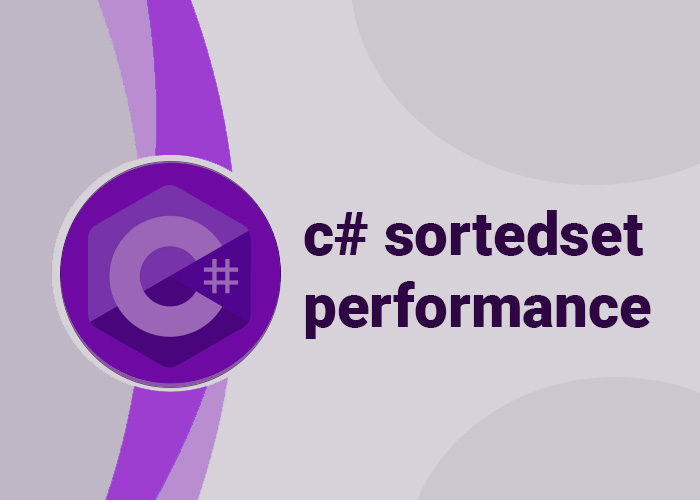C# SortedSet Performance
In C#, the SortedSet<T> class is a collection that stores unique elements in sorted order. It provides efficient set operations like union, intersection, and difference. This article explores the performance characteristics of SortedSet<T>, comparing it with other data structures, and provides best practices for optimizing its usage.
Performance Characteristics
Internal Structure
SortedSet<T> uses a balanced binary search tree (specifically, a Red-Black Tree) for storage. This ensures that elements remain sorted while supporting efficient insertion, deletion, and lookup.
Time Complexity
- Insertion and Deletion: O(log n) time complexity due to the balanced tree structure.
- Search Operations: O(log n) for operations like Contains.
- Enumeration: O(n) as it requires traversing all nodes.
Space Complexity
- Node Overhead: Each node in the tree requires some additional memory for pointers, increasing memory usage compared to linear structures.
Comparison with Other Data Structures
SortedList
- Insertion: Slower for large collections due to array shifting (O(n)).
- Indexed Access: Supports direct access to elements by index, unlike SortedSet.
- Memory Usage: More memory-efficient for small collections.
HashSet
- Insertion/Search: Faster average-time operations (O(1)), but lacks sorting.
- Set Operations: Supports similar operations but unordered.
List
- Insertion/Deletion: Fast only for appending; other operations require shifting (O(n)).
- Sorting: Needs a separate sorting pass (O(n log n)).
Example: Performance Testing
Here's an example comparing the insertion performance of SortedSet and HashSet:
using System;
using System.Collections.Generic;
using System.Diagnostics;
public class SortedSetPerformanceExample
{
public static void Main()
{
const int itemCount = 100000;
Random random = new Random();
// Test SortedSet performance
Stopwatch stopwatch = Stopwatch.StartNew();
SortedSet<int> sortedSet = new SortedSet<int>();
for (int i = 0; i < itemCount; i++)
{
sortedSet.Add(random.Next());
}
stopwatch.Stop();
Console.WriteLine($"SortedSet insertion time: {stopwatch.ElapsedMilliseconds} ms");
// Test HashSet performance
stopwatch.Restart();
HashSet<int> hashSet = new HashSet<int>();
for (int i = 0; i < itemCount; i++)
{
hashSet.Add(random.Next());
}
stopwatch.Stop();
Console.WriteLine($"HashSet insertion time: {stopwatch.ElapsedMilliseconds} ms");
}
}
Best Practices for Optimizing SortedSet
- Appropriate Size: Use SortedSet for medium to large collections where sorting is essential.
- Custom Comparers: Implement efficient comparers that handle sorting criteria.
- Efficient Operations: Minimize set operations that involve large data movement.
Conclusion
SortedSet<T> in C# balances unique storage with efficient sorting and set operations. By understanding its performance characteristics and trade-offs with other collections, you can choose the right structure and optimize data processing in your applications.





